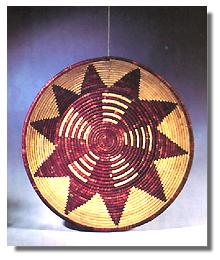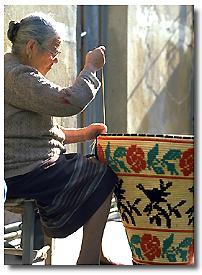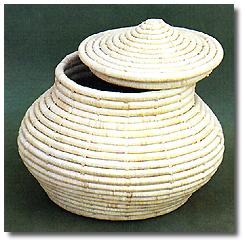Basket work is the most diffuse handicraft
in Sardinia. There are two reasons for this. First of all the raw material is readily available in
the ponds that dot the Sardinian landscape and secondly basketwork is relatively simple in terms of
the tools required.
|

|
|
For this reason baskets were the most
common household item certainly more common than pottery which required more technology and less
widely available raw materials.
Barter and exchange led to baskets
becoming a product of trade.
The baskets on sale in the shops today are the same as those that are
still used in many homes in Sardinia to keep linen in or as containers for bread or biscuits or other
products. Nowadays the baskets are not only seen as simple containers but are also made with designs
that are pleasing to the eye.
|
The designs are predominantly geometric
but Flora and Fauna designs are also quite common.
The shape of the Sardinian baskets depends
on the raw material used.
Straw, asphodel, raffia, palm and wicker are all used in Sardinian
basketry.
Sardinian basketry can be divided into four large groups which also correspond to
different geographical areas.
|
|

|

|
|
In Sinnai and in San Vero Milis the raw
materials used are reeds and straw which are collected after the harvest. The traditional baskets of
these areas are made using a spiral construction while the decorations, which are made using similar
materials or black and red cotton, are added after or during the baskets construction.
The most
typical shape of these baskets is that of an upside down bell, even if some of the baskets made using
this technique have different shapes and are used as furnishings or wall decorations.
|
|